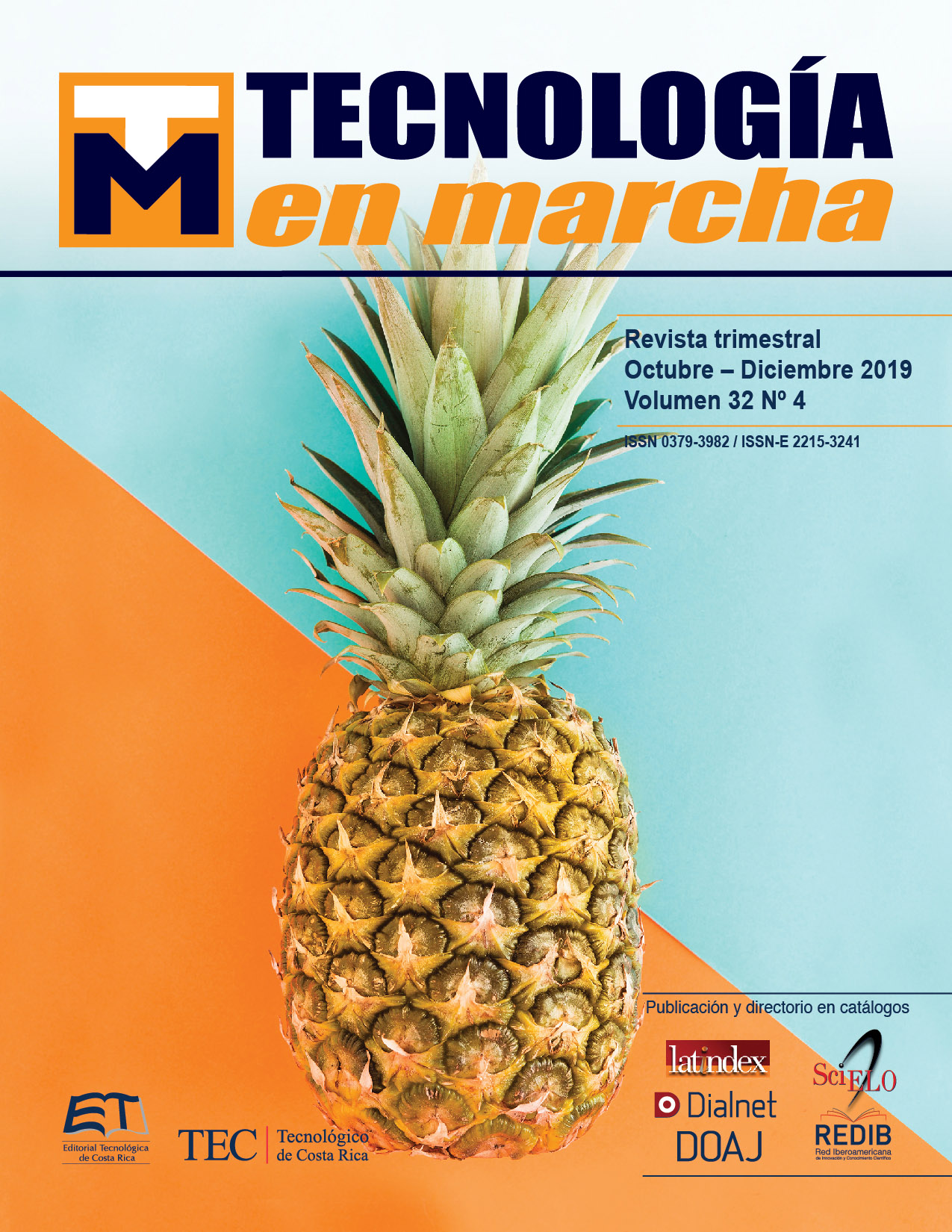Redesign of the transport system of banana bunches for field harvesting Case study: Studer Innotec
Main Article Content
Abstract
This paper describes the experience of technological integration in the case study of Studer Innotec, company that manufactures inverters / chargers and regulators in Switzerland, using an inverter / charger to redesign the transport system improving the efficiency of the agro-productive chain of the post-harvest of banana, developed in the Atlantic sector of Honduras. Currently, the banana transport system is carried out via cable using load animals (mules) making a slow process, in addition to generating costs for the care of these animals or by machines uploaded to the cable via a diesel combustion engine coupled to an oil pump, which generate emissions of gases that pollute the environment and even the banana itself.
With the aim of integrating industrial equipment that allows to collect a larger number of bunches than in the current system, ensuring the quality properties of the banana is presented the redesign of a machine used to transport the banana, changing its diesel engine of 9 hp, by a 5-hp three-phase motor, where the greatest challenge has been to pass the electric energy stored in batteries by an inverter, until reaching a frequency inverter, which controlled the torque and speed of the motor, allowing a better use of the motor, with which it has been possible to transport more than 70 bunches of banana in a route greater than 800 meters inside the farm.
Article Details
Los autores conservan los derechos de autor y ceden a la revista el derecho de la primera publicación y pueda editarlo, reproducirlo, distribuirlo, exhibirlo y comunicarlo en el país y en el extranjero mediante medios impresos y electrónicos. Asimismo, asumen el compromiso sobre cualquier litigio o reclamación relacionada con derechos de propiedad intelectual, exonerando de responsabilidad a la Editorial Tecnológica de Costa Rica. Además, se establece que los autores pueden realizar otros acuerdos contractuales independientes y adicionales para la distribución no exclusiva de la versión del artículo publicado en esta revista (p. ej., incluirlo en un repositorio institucional o publicarlo en un libro) siempre que indiquen claramente que el trabajo se publicó por primera vez en esta revista.
References
[2] C. C. Sornoza, Gestion de la calidad, Mexico: Pearson, 2011.
[3] R. Ballou, Logistica, Administración de la Cadena de Suministros, Mexico: Pearson, 2004.
[4] L. R. y. M. D. Lucía Rodríguez Parada, «Modelo de análisis y validación de propuestas de diseño mediante prototipos flexibles,» DYNA - Ingeniería e Industria , vol. 91, nº 5, p. 502, 2017.
[5] F. B. M. V. J. L. F. M. O. J. V. R. M. N. L. M. L. W. Y. M. B. E. R. P. R. B. Saúl Cabrera, «PERSPECTIVAS EN EL PROCESAMIENTO DE MATERIALES - ELECTRODOS PARA BATERÍAS DE ION LITIO EN BOLIVIA,» REVISTA BOLIVIANA DE QUÍMICA, vol. 29, nº 1, p. 22, 2012.
[6] J. A. Castillo, «Diseño de un inversor trifásico de siete niveles controlado con máquina de estados,» Tecnología en Marcha, vol. 30, nº 2, p. 89, 2017.
[7] S. Innotec, «http://www.studer-innotec.com,» 23 05 2018. [En línea]. Available: http://www.studer-innotec.com/media/document/0/honduras-movimiento-de-bananos-dole.pdf.
[8] J. R. Ocampo, «SISTEMA DE BAJO COSTO PARA MONITOREO DE DISTURBIOS DE VIBRACIÓN EN MÁQUINAS ROTATORIAS,» Innovare, vol. 2, nº 2, p. 15, 2013.
[9] T. Guzmán-Hernández, F. Araya-Rodríguez, G. Castro-Badilla, y J. Obando-Ulloa, «Uso de la energía solar en sistemas de producción agropecuaria: producción más limpia y eficiencia energética,» Tecnologia en Marcha, vol. 29, nº 8, p. 48, 2016.

